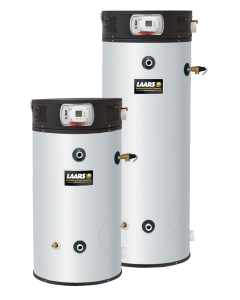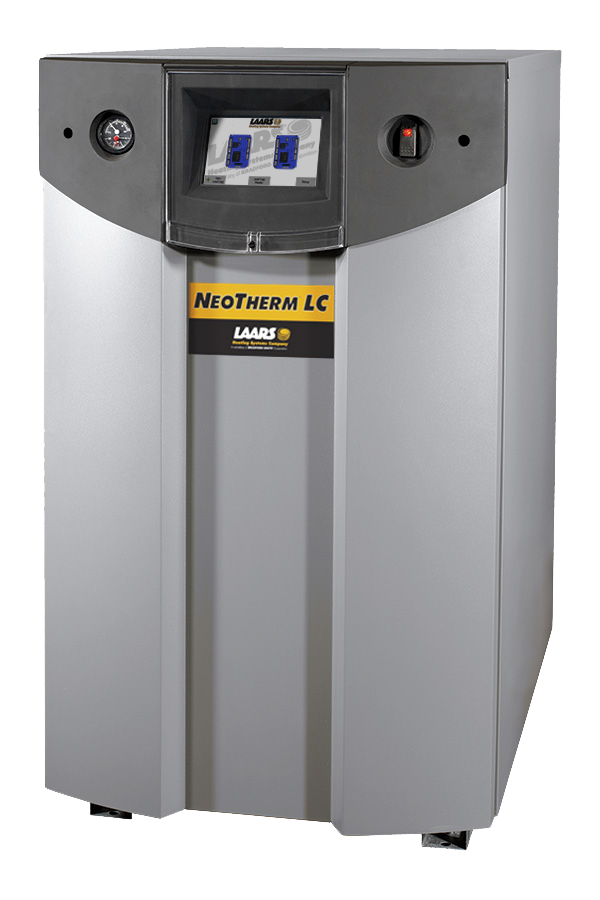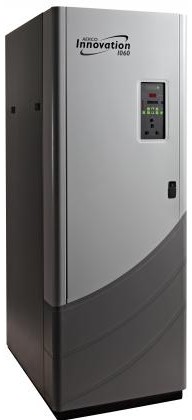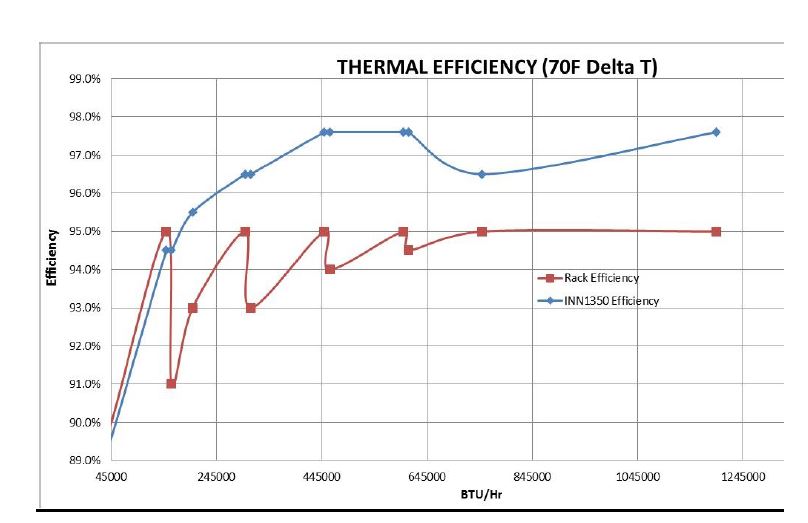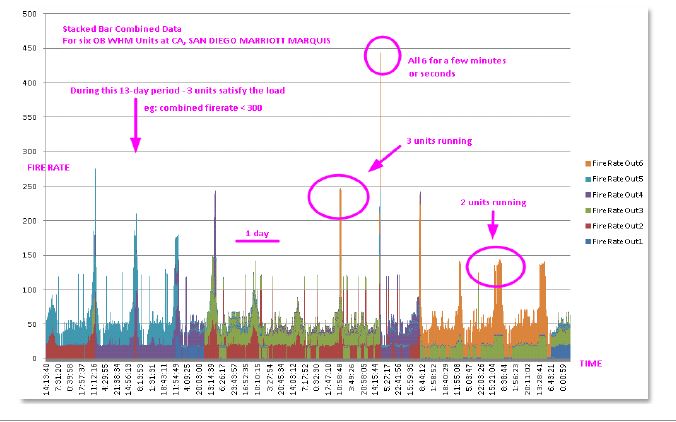Fueled by news articles and industry blogs associating Legionnaire’s disease with domestic water heating, we’ve received more inquiries about the Aerco Innovation series of tankless water heaters. This month, our Monday Morning Minutes posts will look at this technology and discuss what sets these water heaters apart from traditional options.
Traditional Water Heating Systems
Traditional water heater systems use a large volume of storage, coupled with a recovery water heater. There are two basic types of units in larger systems: tank-type heaters and commercial volume water heaters coupled with storage tanks.
Traditional tank-type heaters store a large volume of water, and that water loses temperature as it sits in storage. ASHRAE standard 90.1 refers to this as “standby loss.” Volume water heaters also incorporate a large storage tank, a pump to circulate the heater, and some piping between the two. These items add cost and use valuable space in the mechanical equipment room.
In traditional systems, the purpose of the heater is to replenish the tank with hot water. When hot water is used at the fixtures, it comes out of the tank. These tanks experience thermal stratification, so the water at the top of the tank has a higher temperature than the bottom of the tank. Storage may allow the water to become stagnant as well, contributing to conditions that may promote microorganism growth.
Advantages of Tankless Water Heaters
An Aerco tankless water heater system provides several advantages over traditional systems:
- You can design for lower supply temperatures, since the water is supplied from the heater and not the tank.
- They require less space. Not only is the tank removed, but the pump and interconnecting piping associated with the tank are also removed.
- The efficiency of the heater is dramatically greater because the coolest water is entering the unit and isn’t recirculated from a storage tank.
- There is no stratified lower temperature since there is no tank. This also reduces the likelihood of stagnation.
- Three-sensor feed-forward control system keeps the unit temperature control within ±4°F.
- Generous turndown ratio of 20:1 allows operation down to 5% of nameplate without wasteful cycling.
Tankless vs. Instantaneous Water Heaters
Why are the Aerco Innovation water heaters called tankless and not instantaneous? The internet is littered with articles about instantaneous water heaters that don’t provide instantaneous hot water at the fixtures. We’re in the industry and we understand that it’s the system that should be designed to provide instantaneous hot water. We use properly sized recirculation pumps and piping, proper insulation, short supply pipes to fixtures, and properly applied ASSE tempering valves in an effort to provide “instantaneous” hot water.
Next week we’ll look at the piping differences between volume heaters and tankless heaters.

